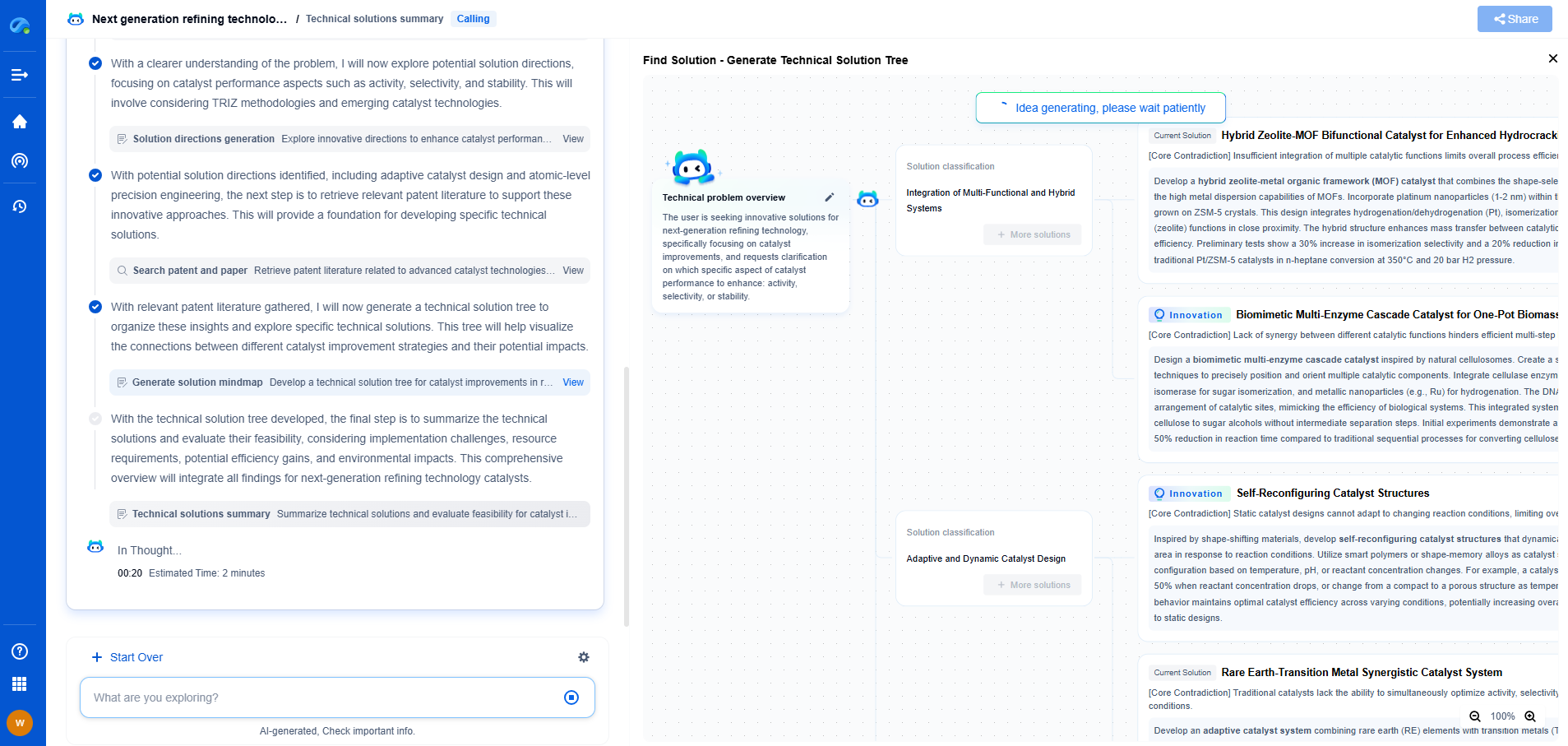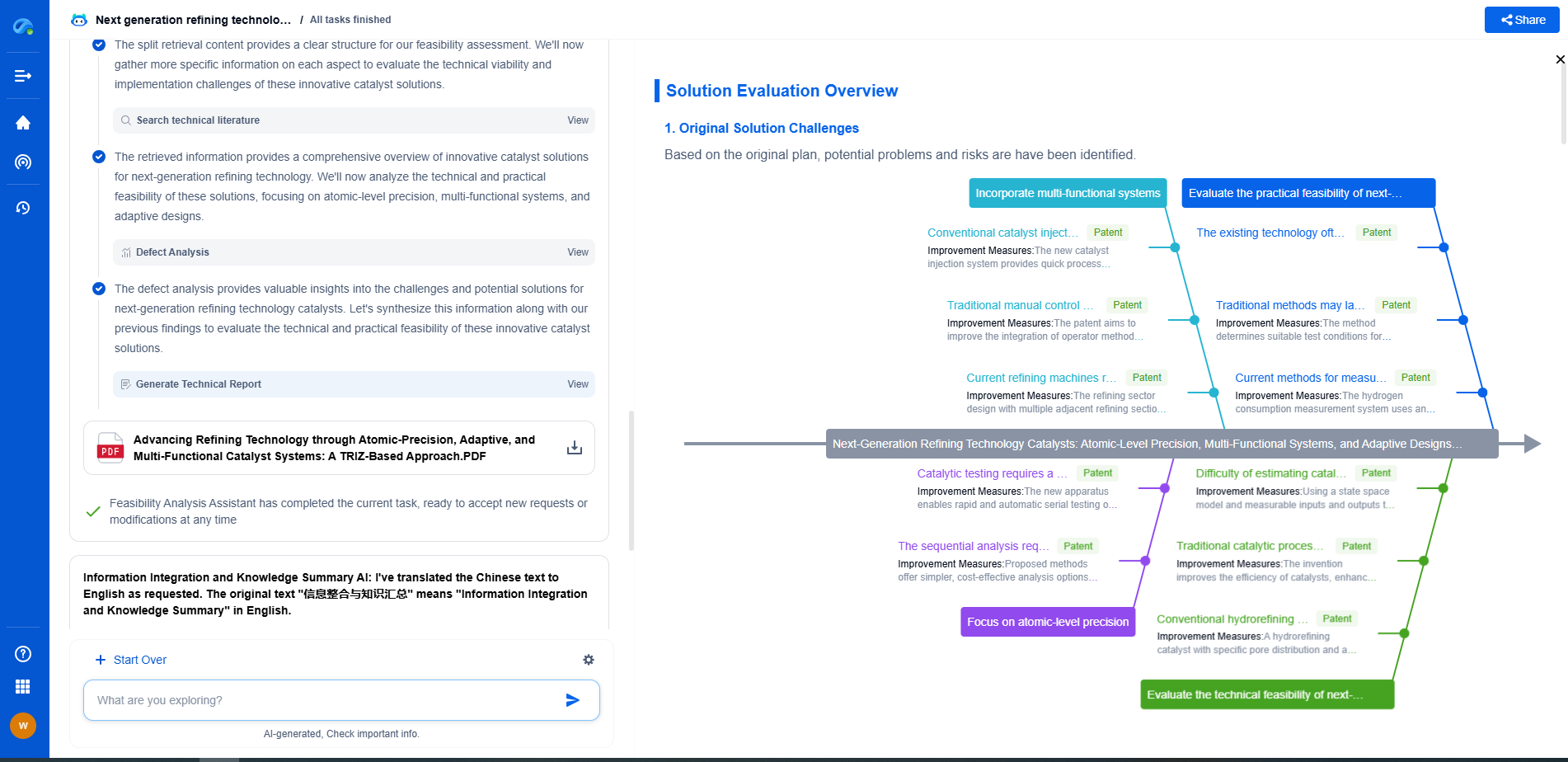How to interpret data from drilling sensors
JUN 20, 2025 |
**Understanding Drilling Sensors**
Drilling sensors are devices that measure different parameters during the drilling process. These sensors are strategically placed along the drill string and in various drilling equipment to capture a variety of data. Common types of sensors include pressure sensors, temperature sensors, vibration sensors, and torque sensors, among others. Each sensor type provides specific insights, making it essential to understand what each sensor measures and how it relates to the drilling process.
**Data Collection and Transmission**
The first step in interpreting drilling sensor data is understanding how data is collected and transmitted. Sensors capture real-time data, which is then sent to the surface via wired or wireless telemetry systems. This data is often integrated into a central system where it can be monitored and analyzed. Ensuring data integrity and accuracy is crucial as errors in transmission can lead to incorrect interpretations.
**Key Parameters Monitored**
Several key parameters are monitored during drilling operations, each providing critical information:
1. **Downhole Pressure**: This indicates the pressure within the wellbore and helps in maintaining well control. Abnormal pressure readings can signify potential issues such as a kick or a blowout.
2. **Temperature**: Downhole temperatures give insights into the thermal gradient of the formation and are critical for selecting the right drilling fluids and materials.
3. **Torque and Drag**: Monitoring torque and drag helps assess the efficiency of the drilling process and can indicate issues such as stuck pipe or excessive wear on the drill bit.
4. **Vibration**: Excessive vibration can lead to equipment failure. Analyzing vibration data helps in optimizing the drilling parameters to prevent costly downtime.
**Data Interpretation Techniques**
Interpreting drilling sensor data requires a combination of real-time analysis and historical data comparison. Advanced data analytics techniques, including machine learning algorithms, can be employed to identify patterns and predict potential issues before they occur. Here are some key techniques:
- **Trend Analysis**: Observing trends over time can reveal gradual changes in the drilling environment, allowing for proactive adjustments.
- **Anomaly Detection**: Identifying deviations from normal operating parameters can help in early detection of potential problems.
- **Correlational Analysis**: Understanding how different parameters interact can provide deeper insights into the drilling process and help optimize operations.
**Utilizing Data for Decision-Making**
The ultimate goal of interpreting drilling sensor data is to make informed decisions that enhance operational efficiency and safety. By integrating data from various sensors, operators can gain a comprehensive understanding of the drilling environment and adjust parameters in real-time. This can lead to improved drilling performance, reduced non-productive time, and enhanced safety for personnel and equipment.
**Challenges and Best Practices**
Interpreting drilling sensor data comes with its own set of challenges, including data overload, noise, and variation in sensor accuracy. Implementing best practices such as regular sensor calibration, data validation, and employing skilled data analysts can help overcome these challenges.
Moreover, fostering collaboration between drilling engineers, data scientists, and IT specialists ensures that data is accurately interpreted and effectively utilized in decision-making processes.
**Conclusion**
Drilling sensor data is a powerful tool for optimizing drilling operations. By understanding the types of sensors and the data they provide, employing advanced data interpretation techniques, and integrating data-driven decisions into operations, companies can significantly enhance the efficiency and safety of their drilling activities. Embracing the power of data not only drives operational success but also positions companies at the forefront of technological innovation in the drilling industry.
Navigating the Complexities of Drilling Innovation? Let AI Do the Heavy Lifting
In an industry where subsurface conditions, materials science, and drilling dynamics evolve rapidly, staying ahead of technical innovation and protecting your intellectual property can be overwhelming.
Patsnap Eureka, our cutting-edge AI assistant, is built for R&D and IP professionals in high-tech industries like drilling technologies. Whether you're optimizing rotary steerable systems, evaluating high-temperature materials, or exploring next-gen automation in directional drilling, Eureka enables real-time analysis of the latest patents, technology landscapes, and competitive movements—all from one intelligent, intuitive platform.
Ready to accelerate your development cycle and make strategic decisions with confidence? Explore Patsnap Eureka today—where smart drilling starts with smarter insights.
- R&D
- Intellectual Property
- Life Sciences
- Materials
- Tech Scout
- Unparalleled Data Quality
- Higher Quality Content
- 60% Fewer Hallucinations
Browse by: Latest US Patents, China's latest patents, Technical Efficacy Thesaurus, Application Domain, Technology Topic, Popular Technical Reports.
© 2025 PatSnap. All rights reserved.Legal|Privacy policy|Modern Slavery Act Transparency Statement|Sitemap|About US| Contact US: help@patsnap.com

